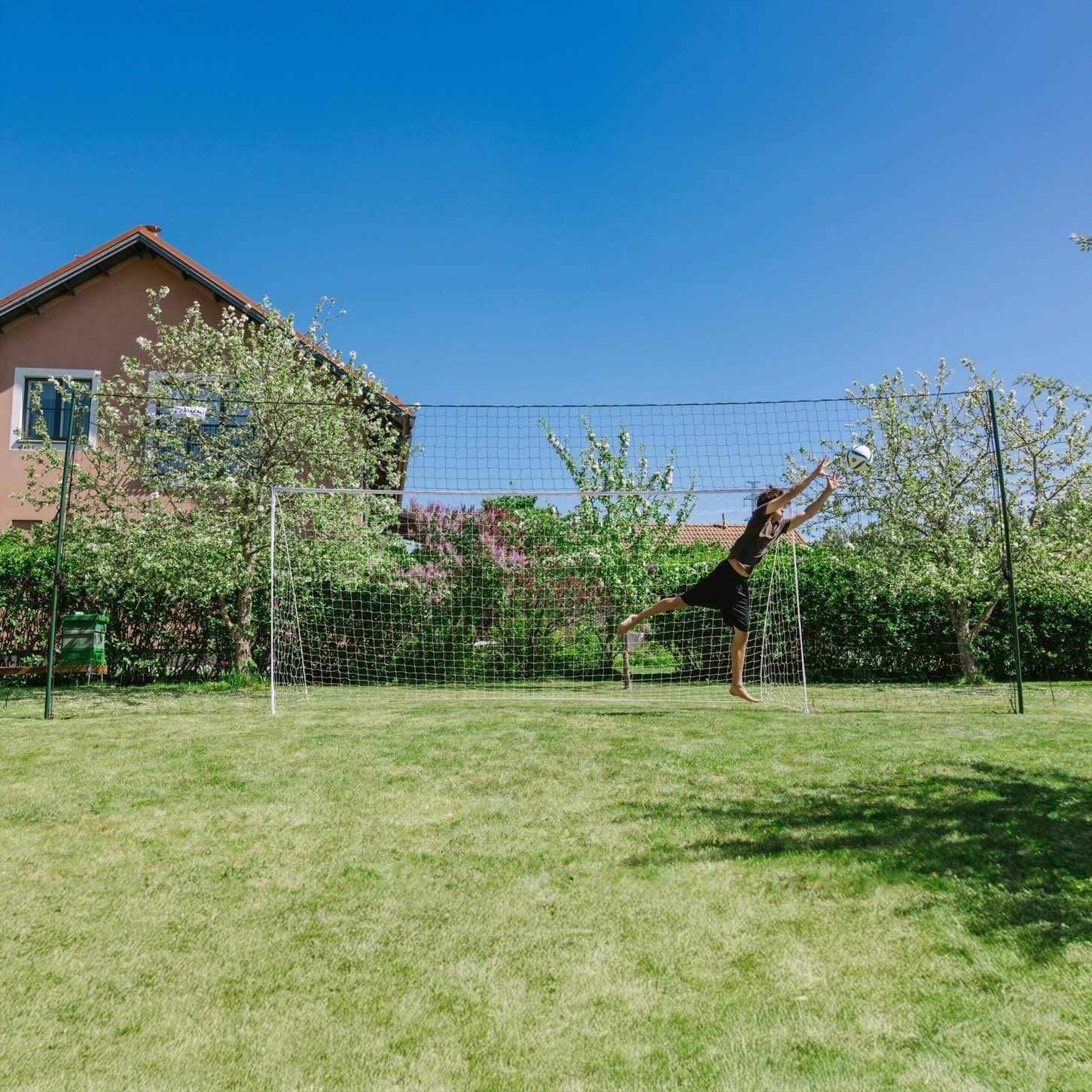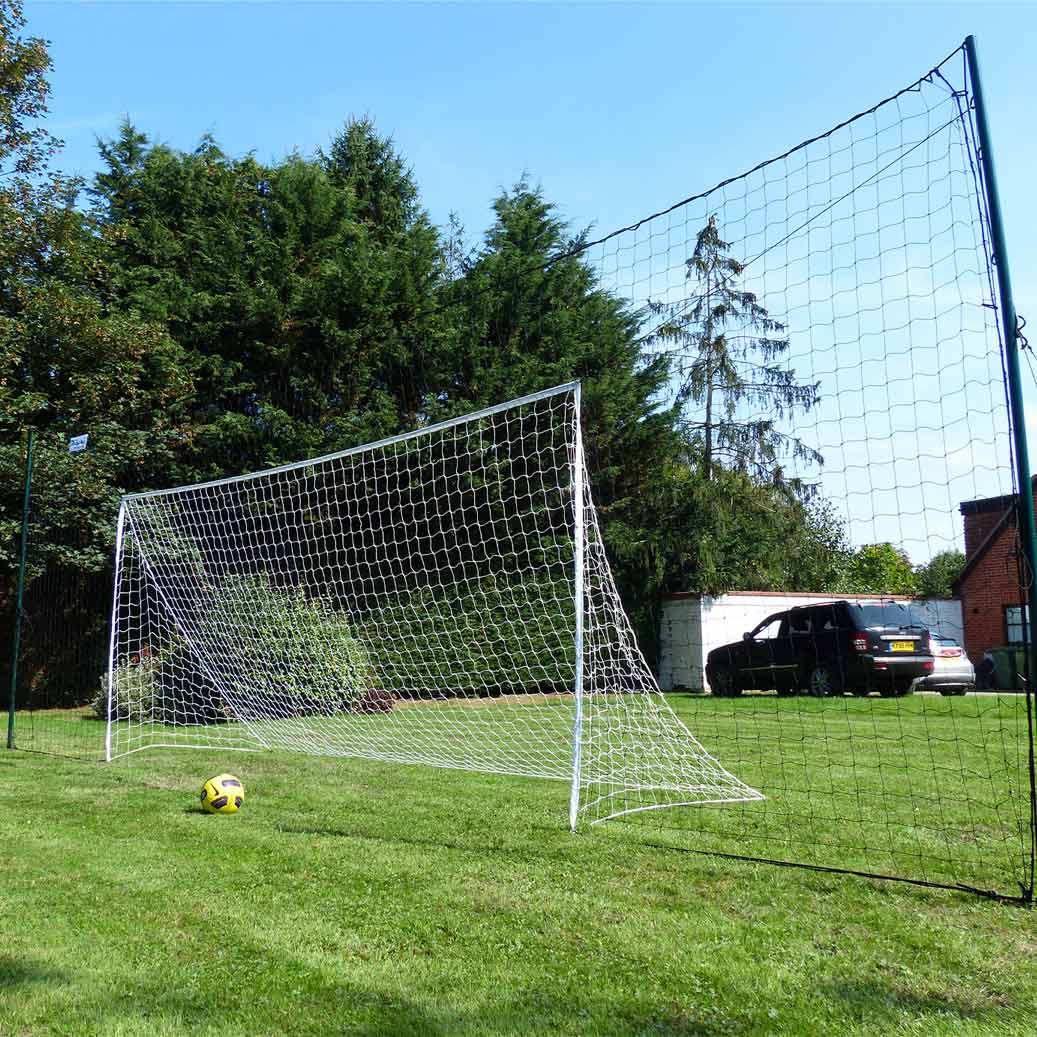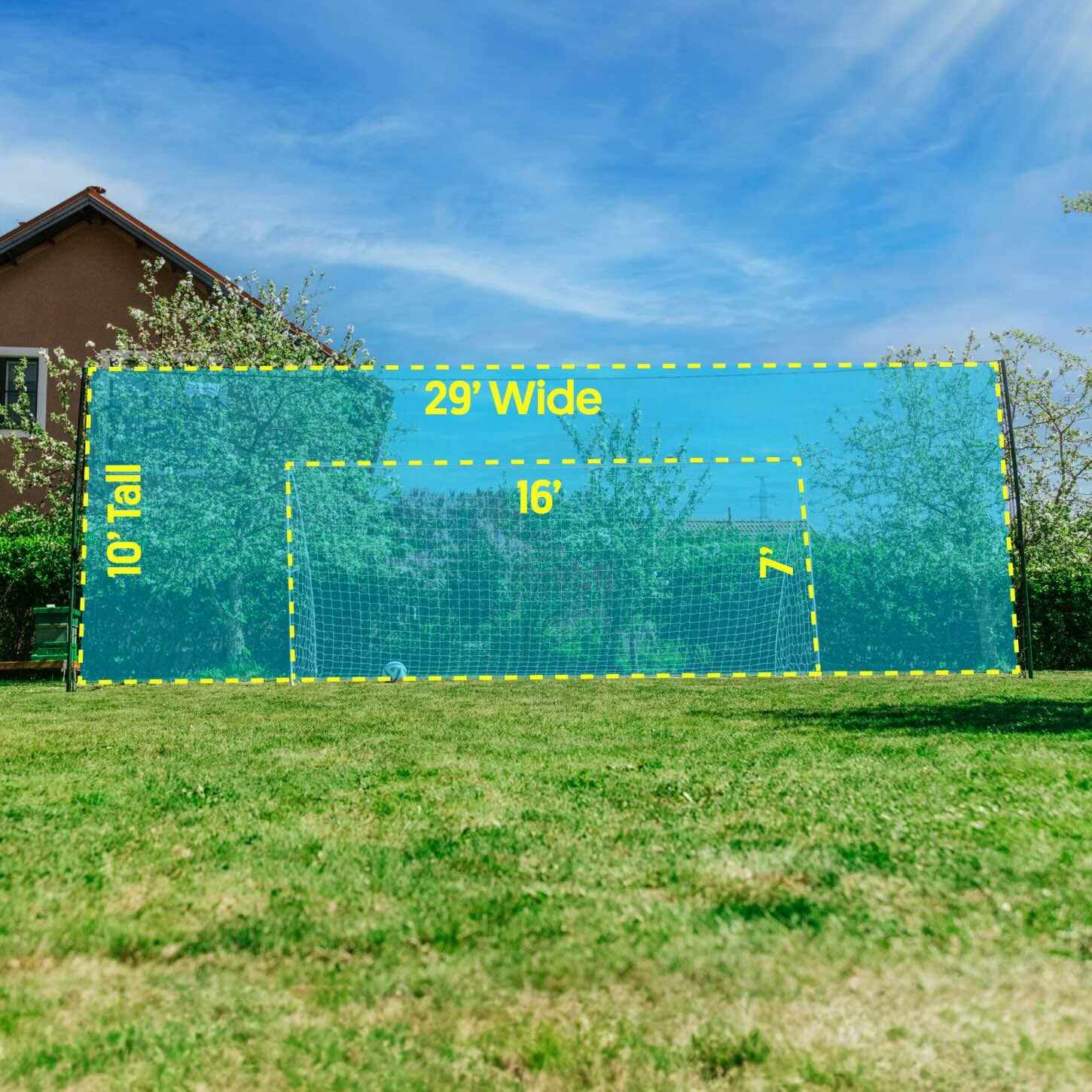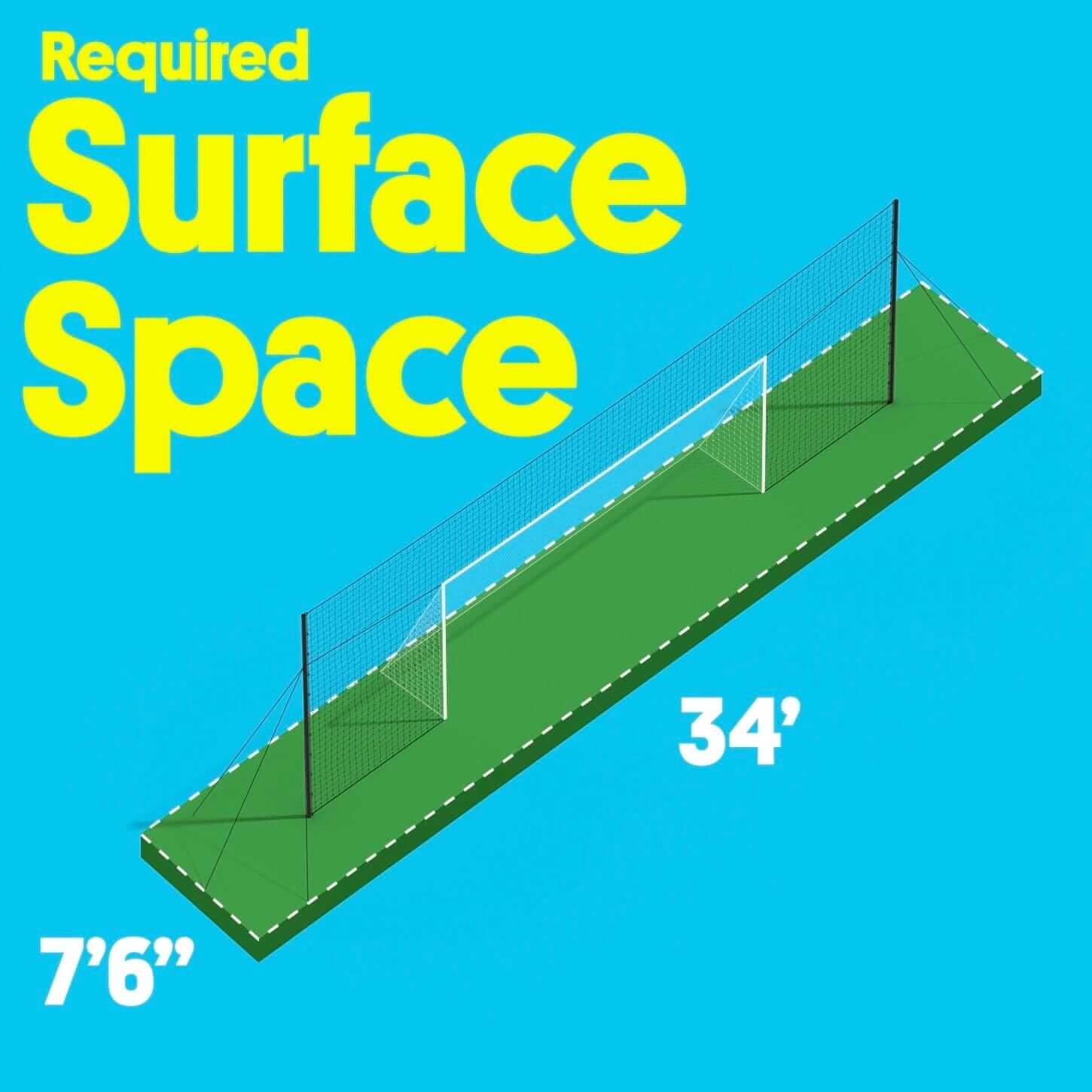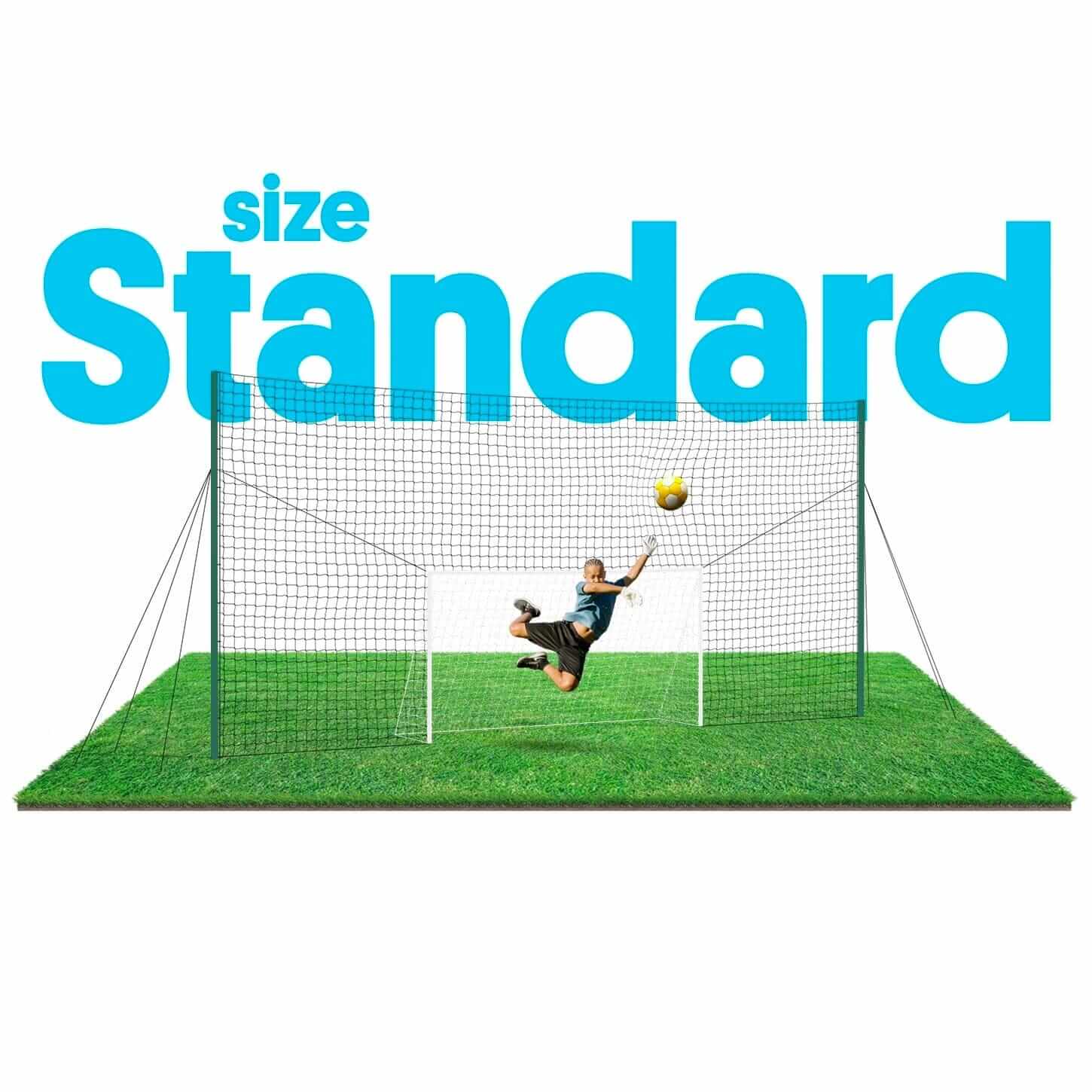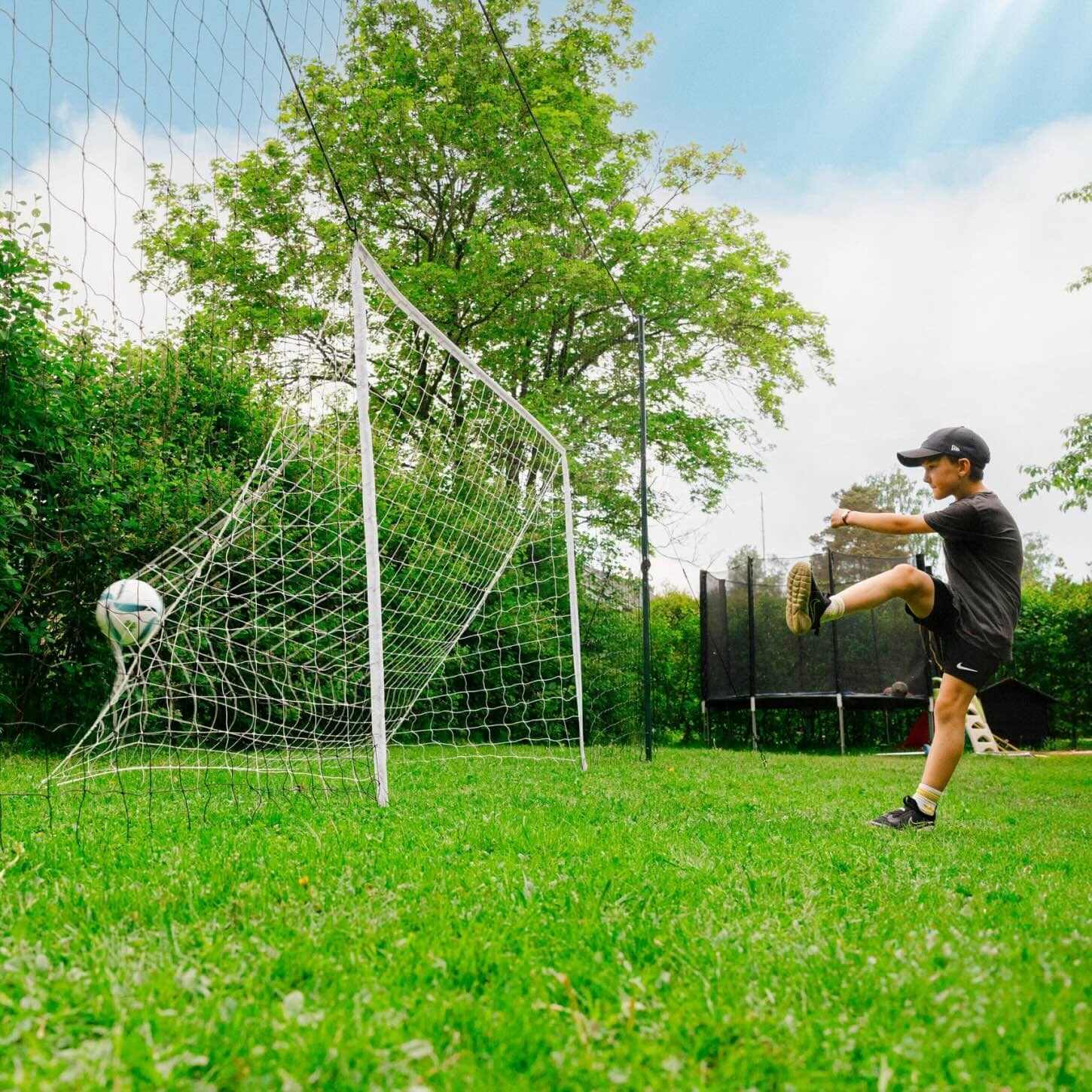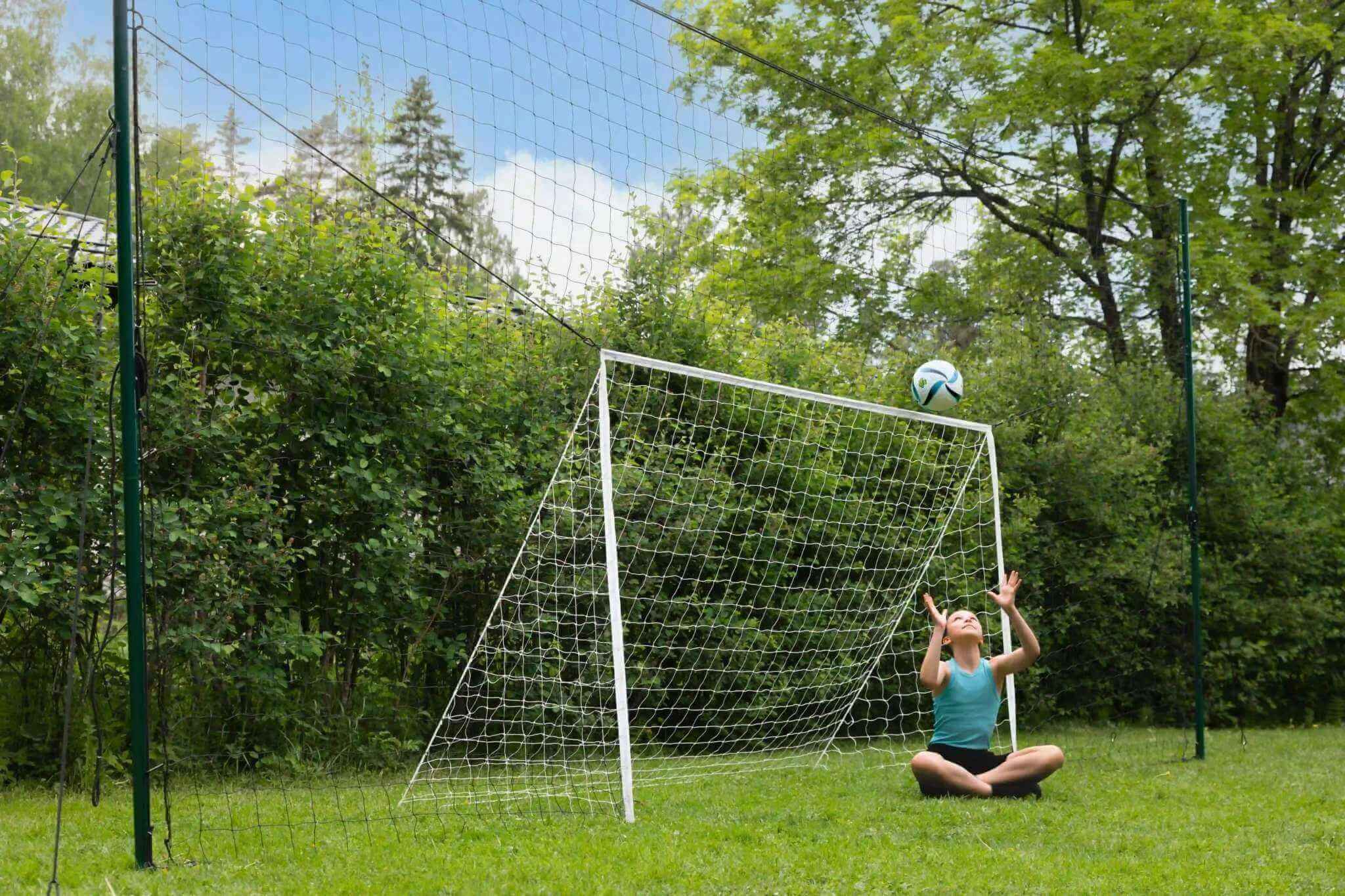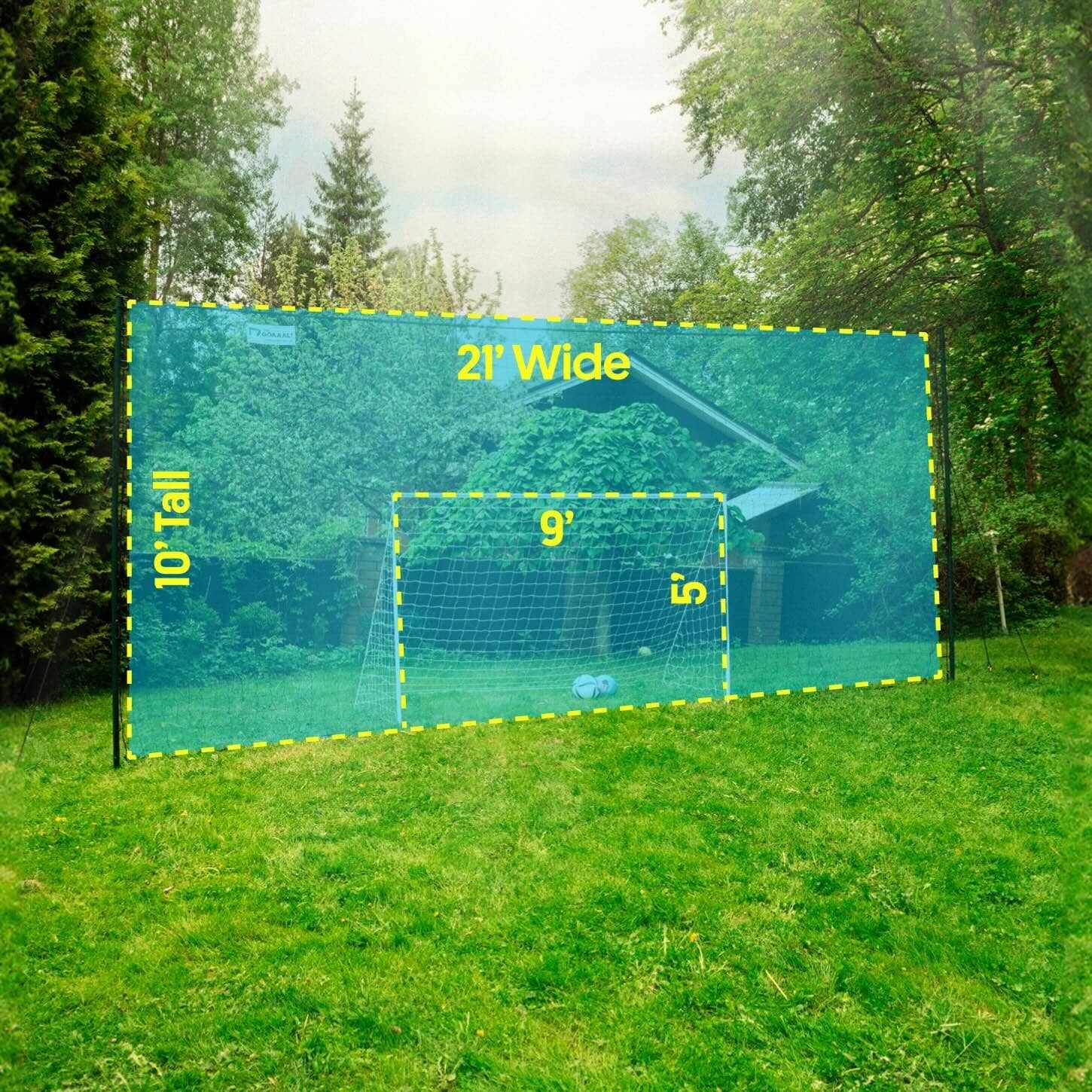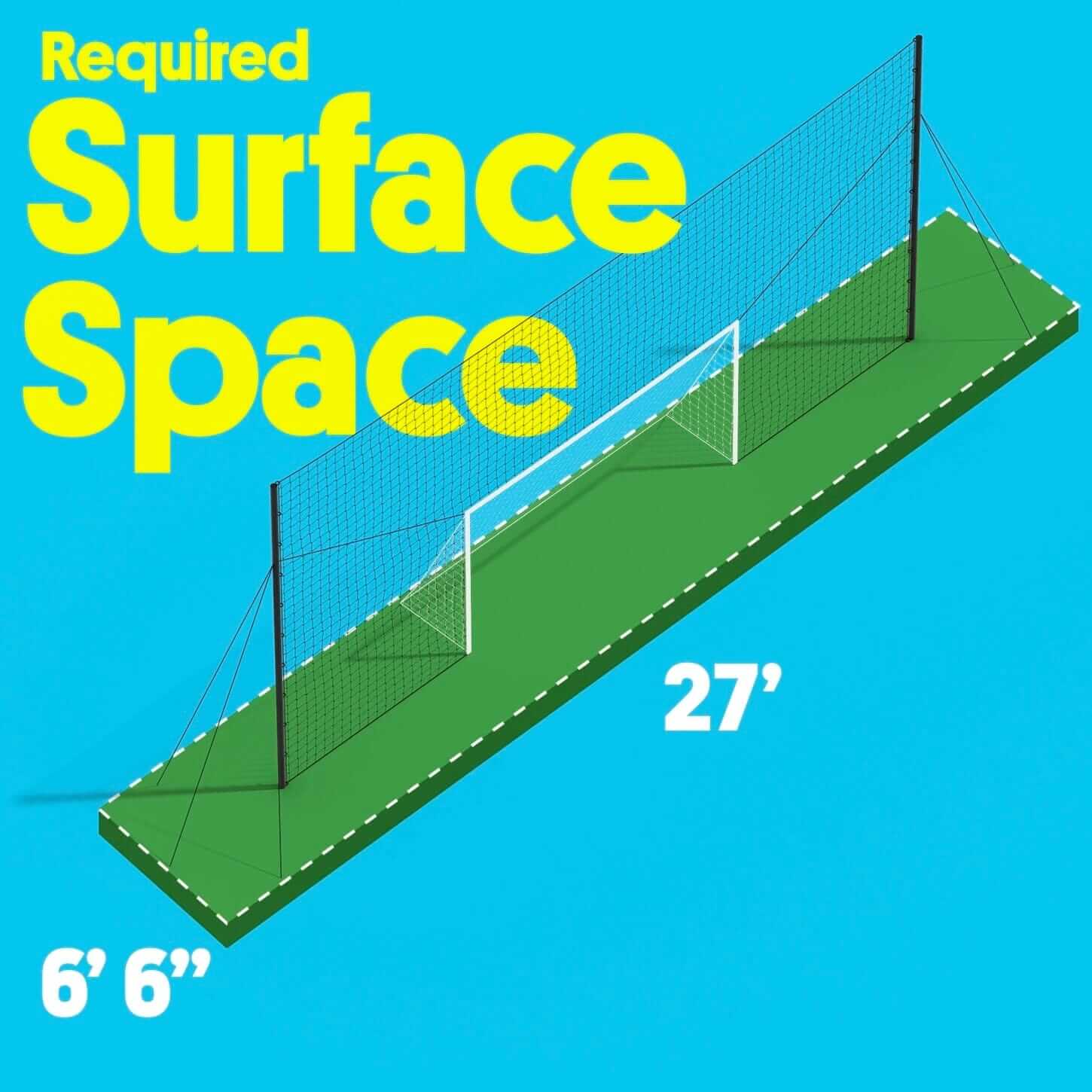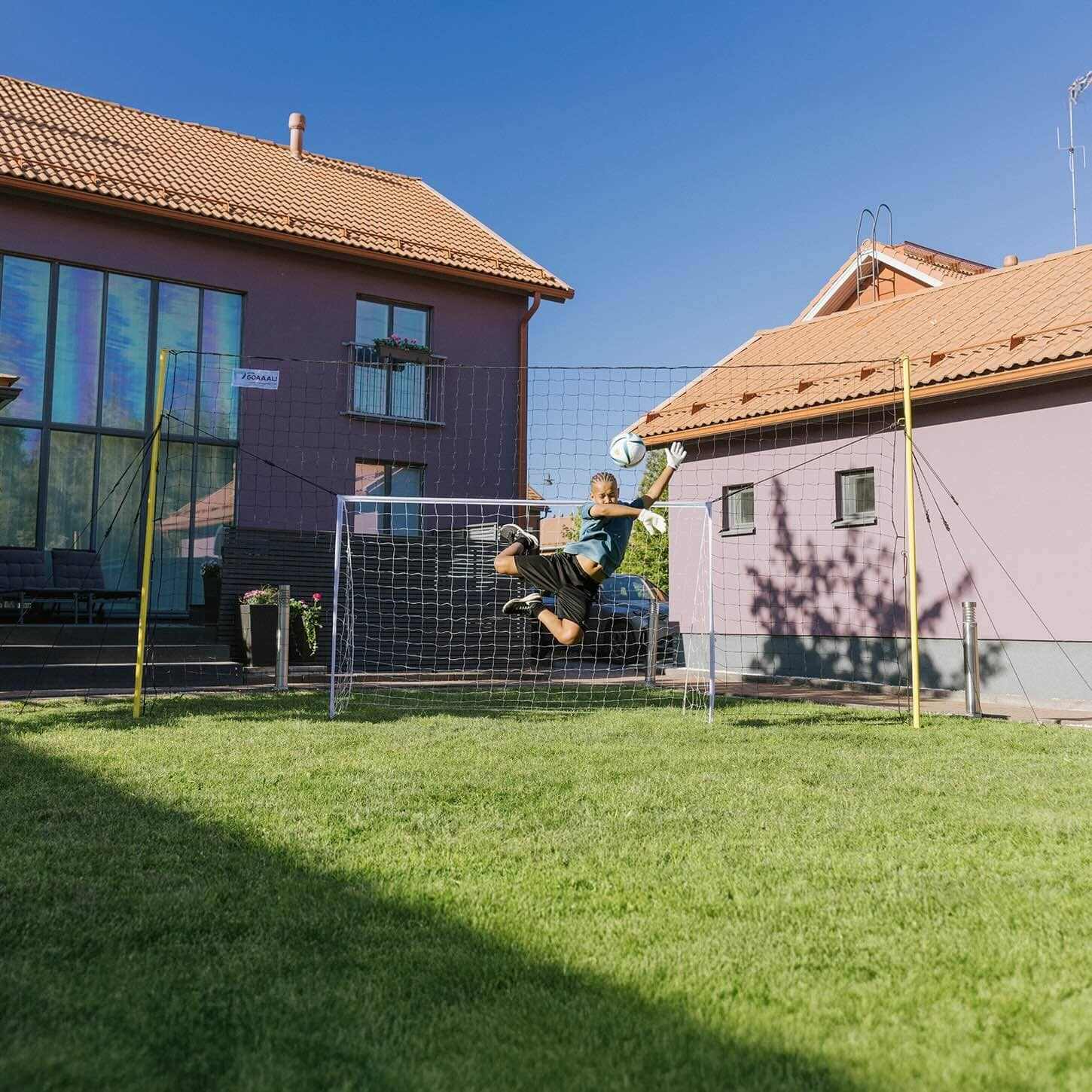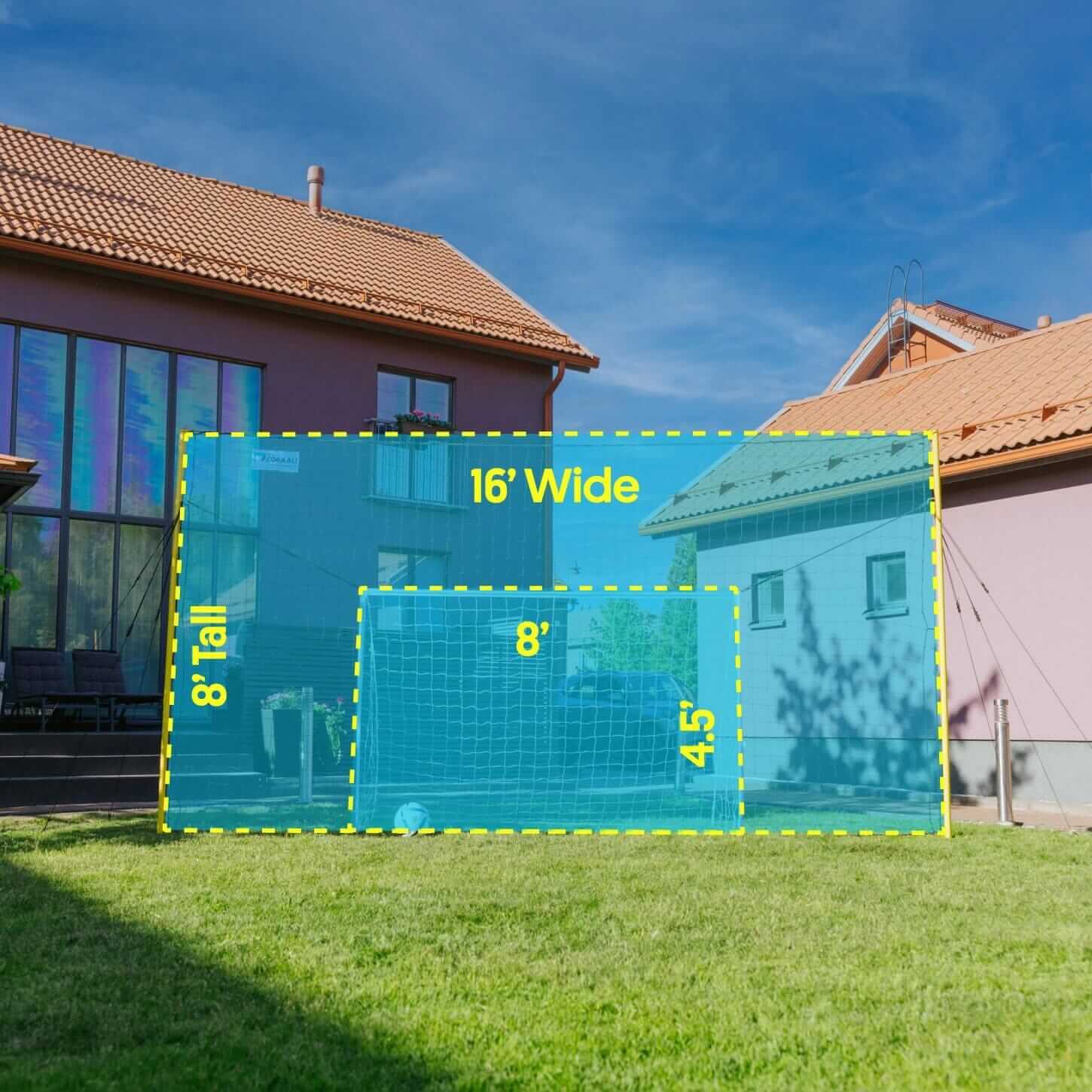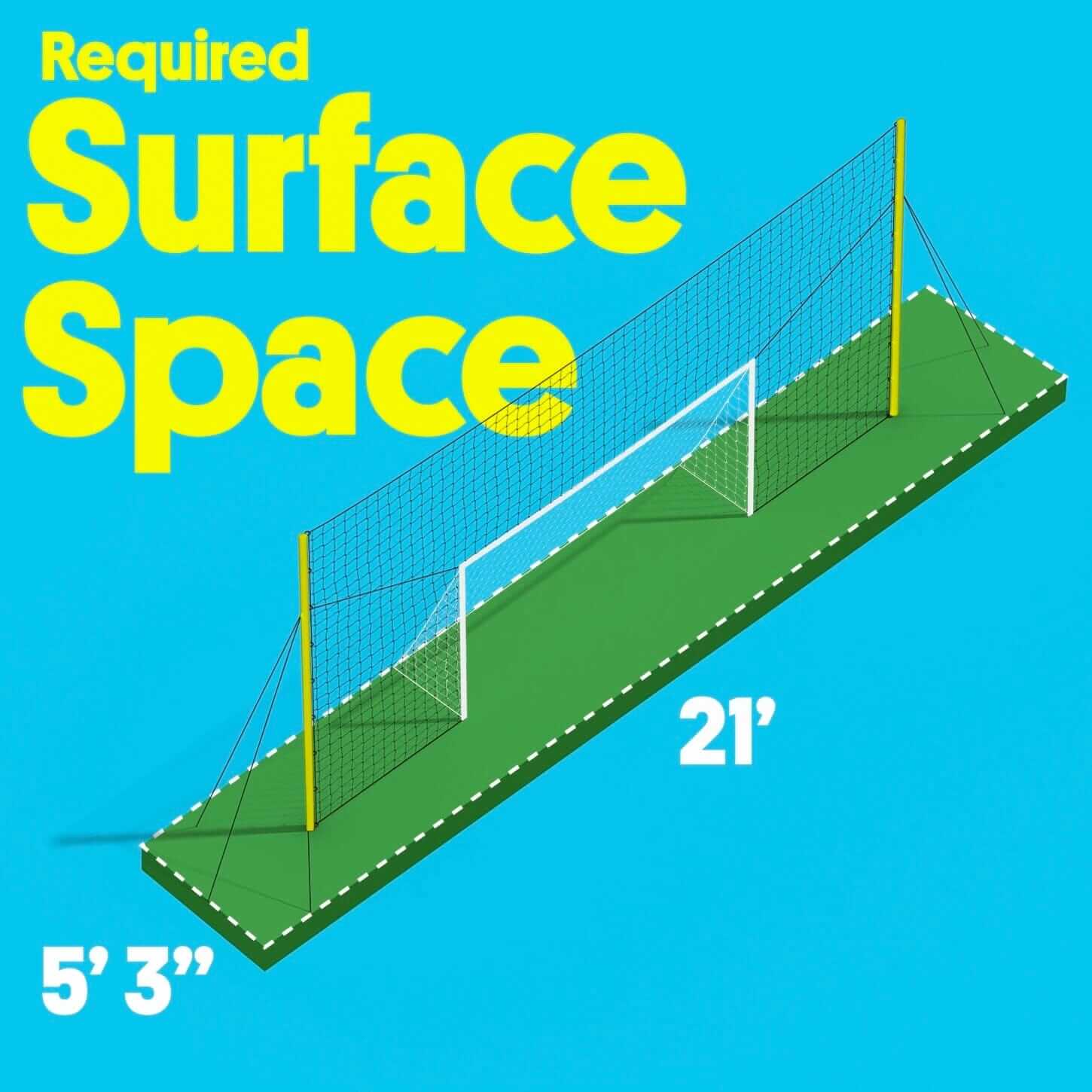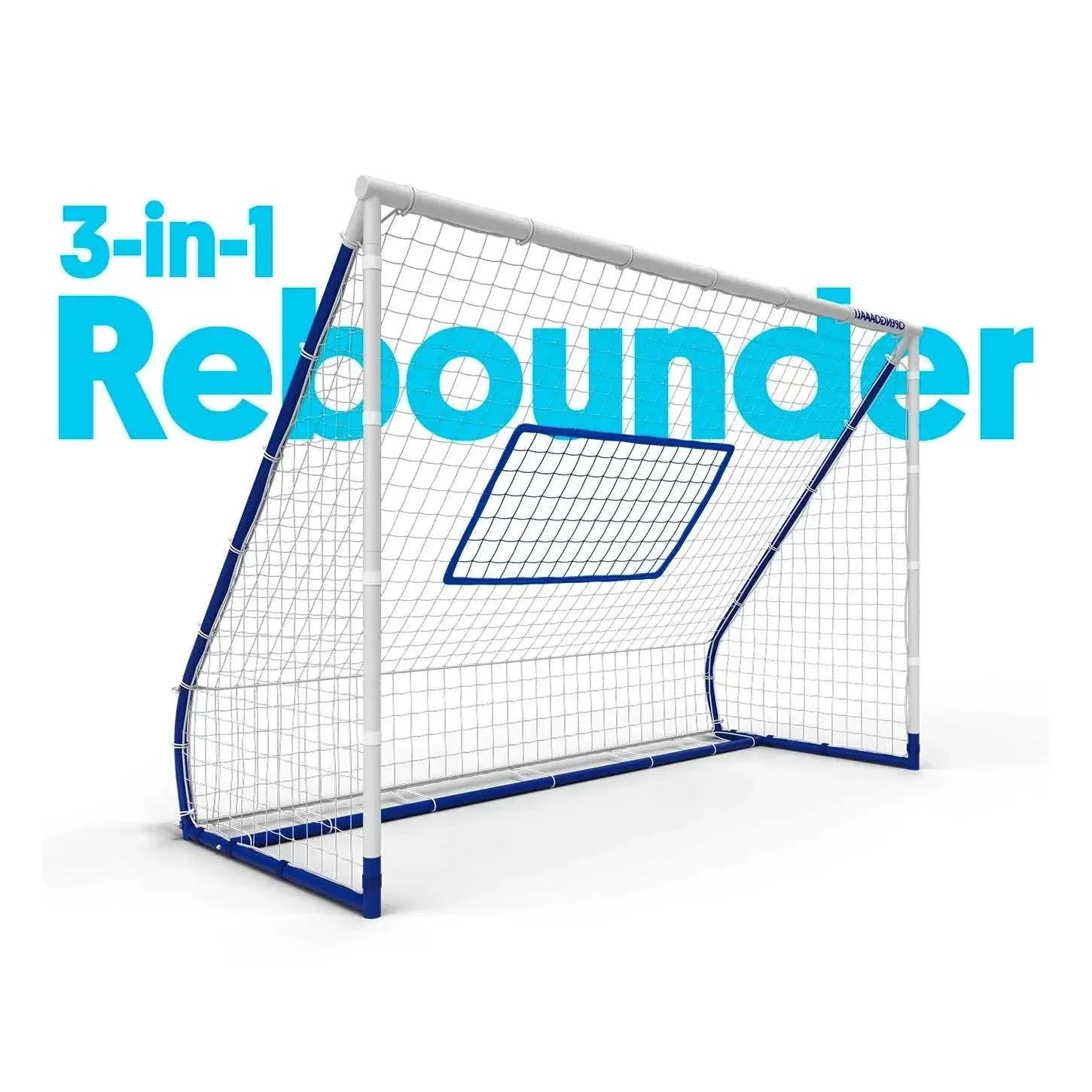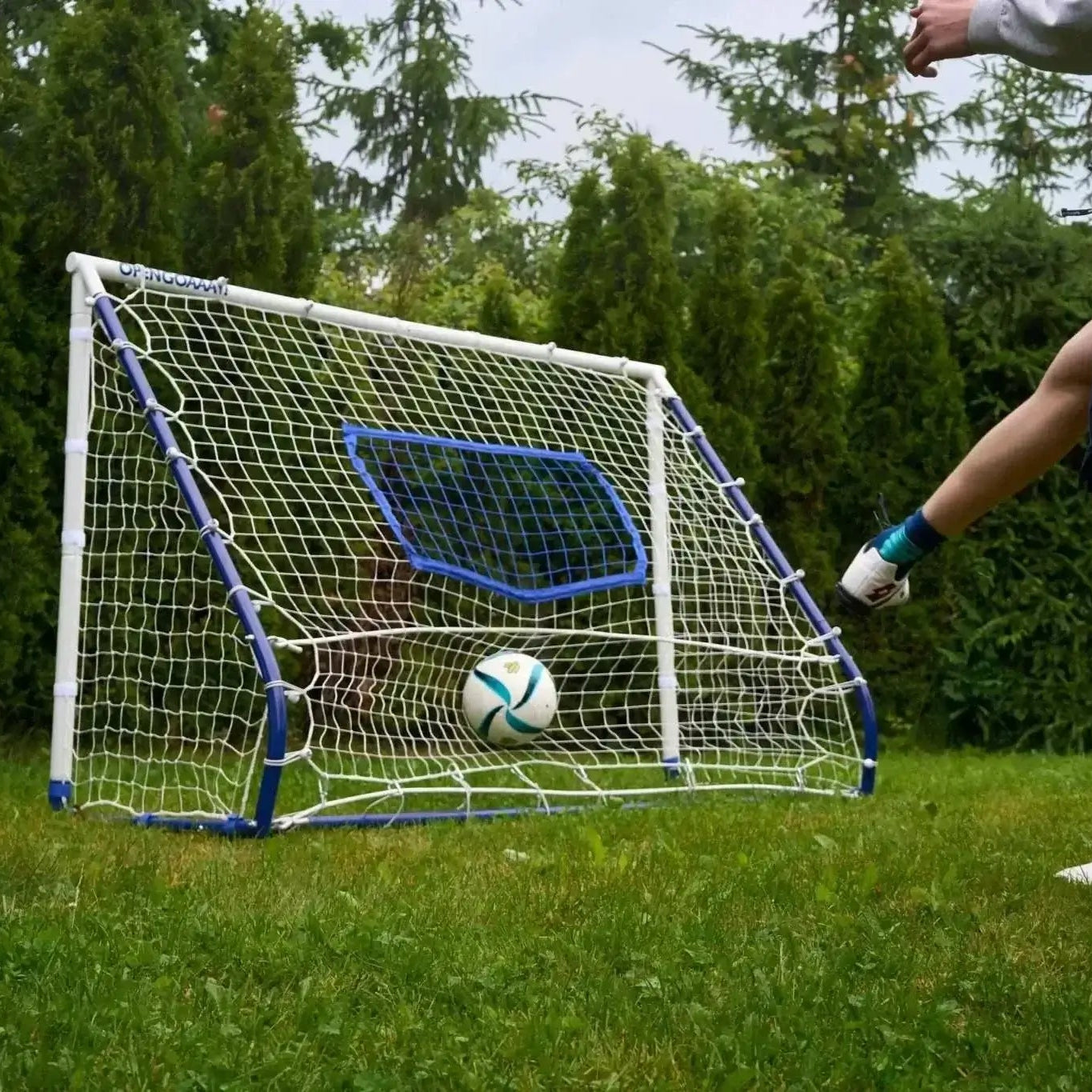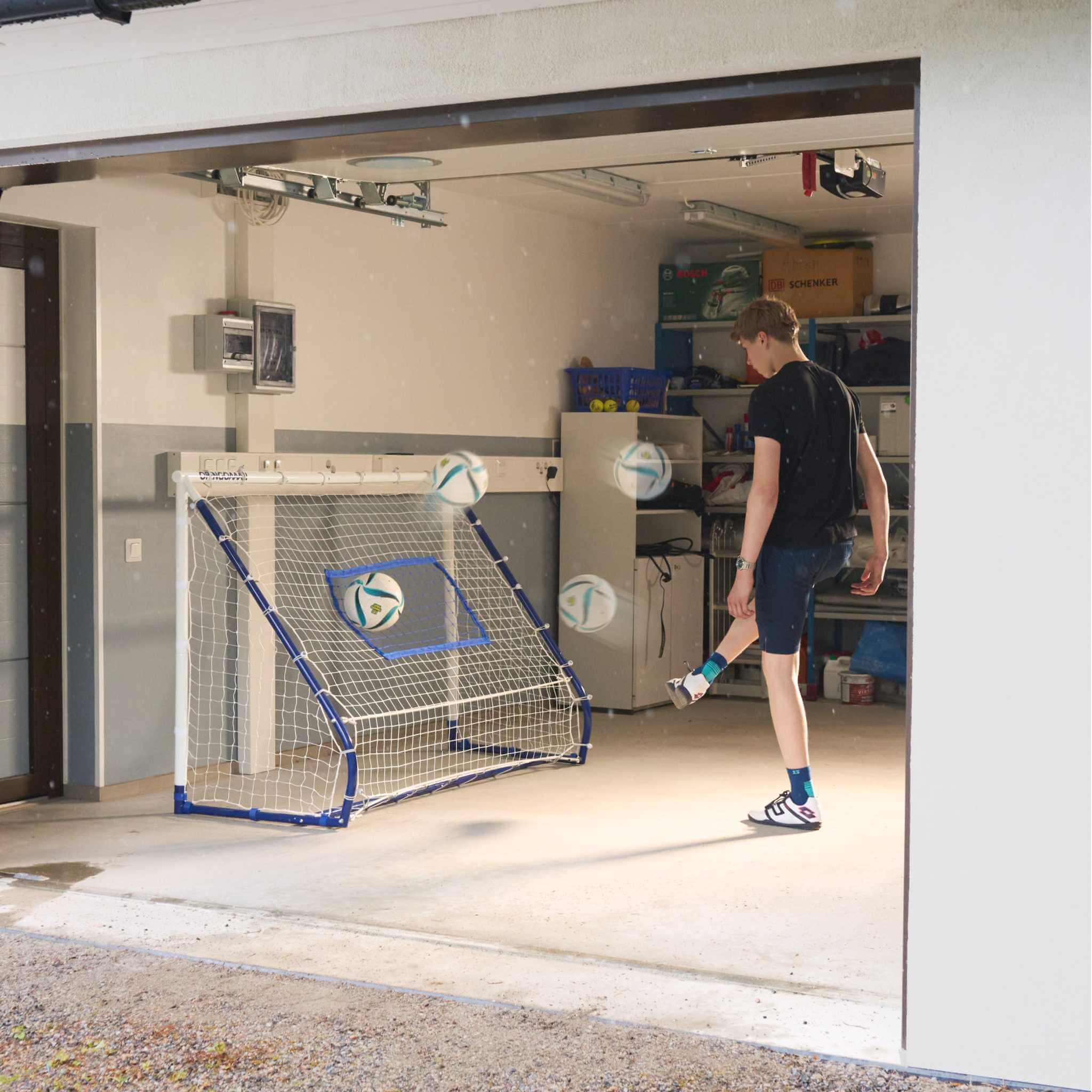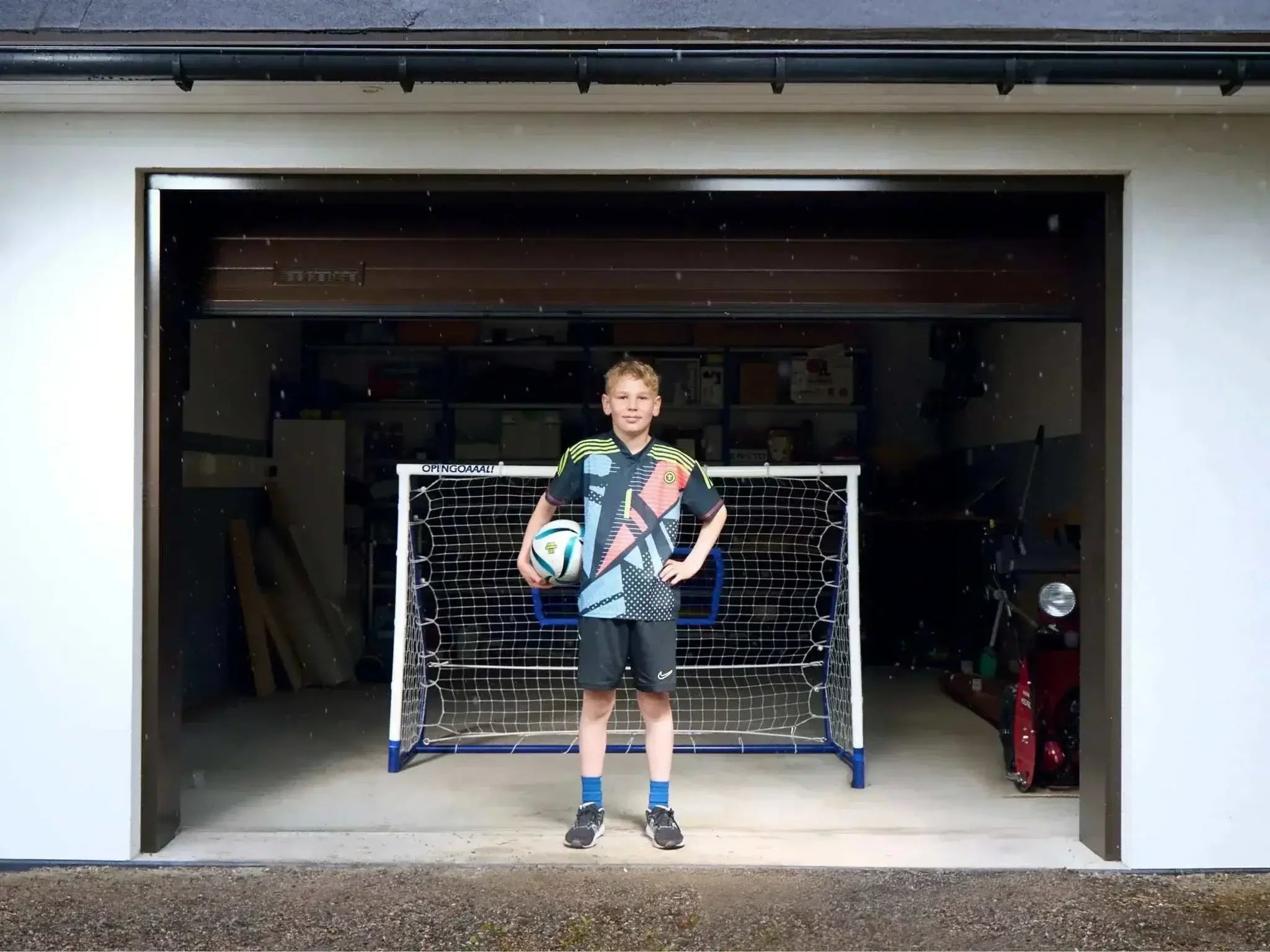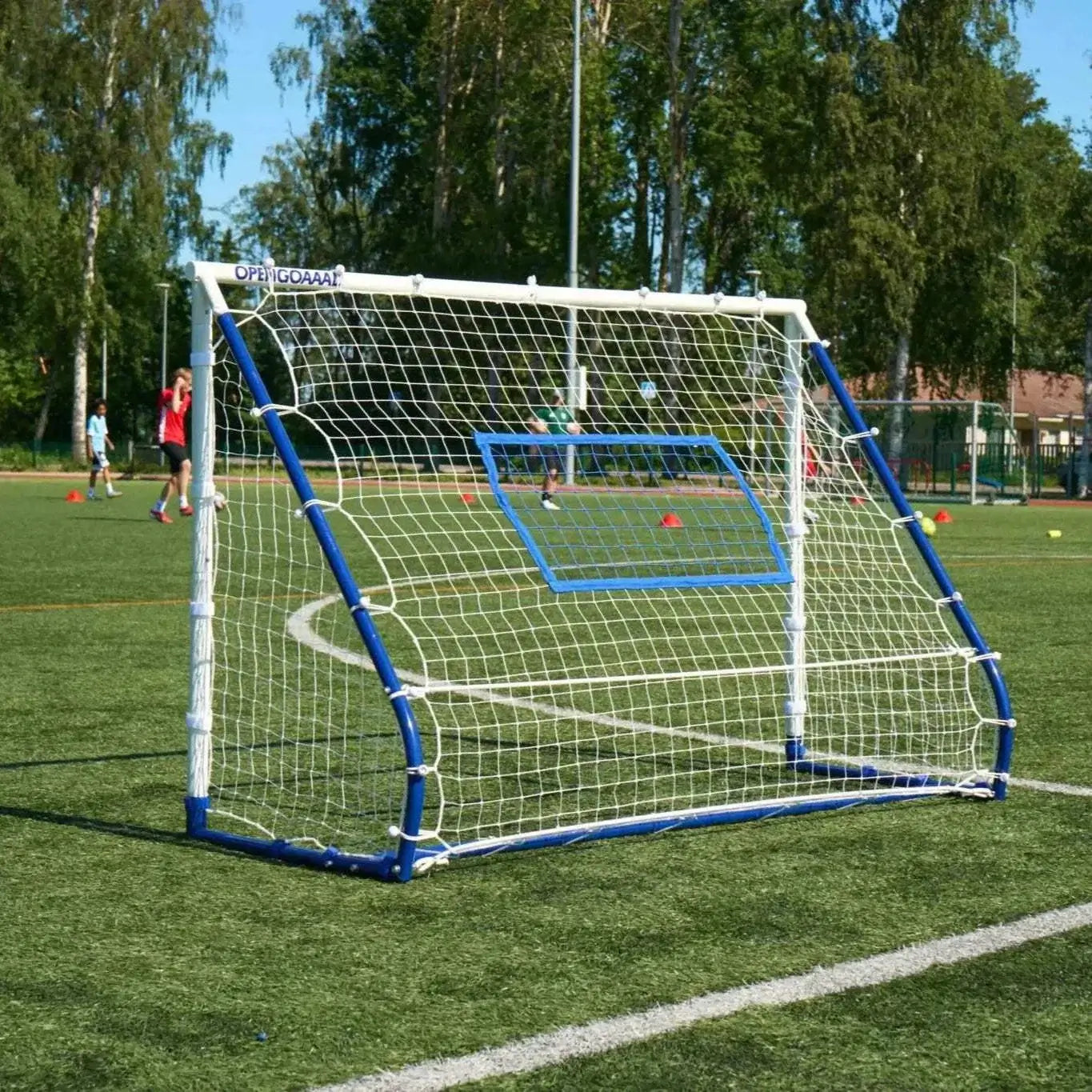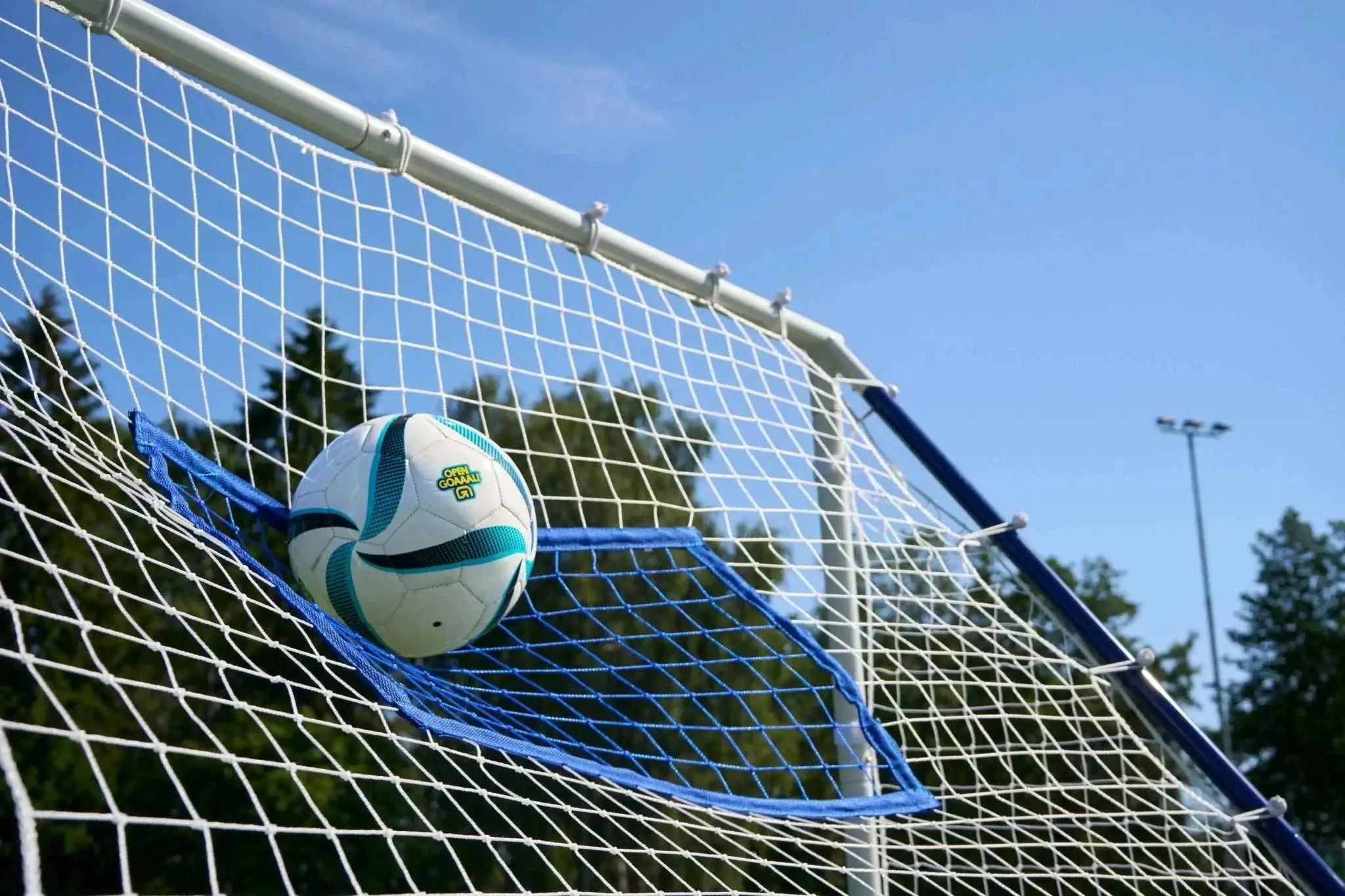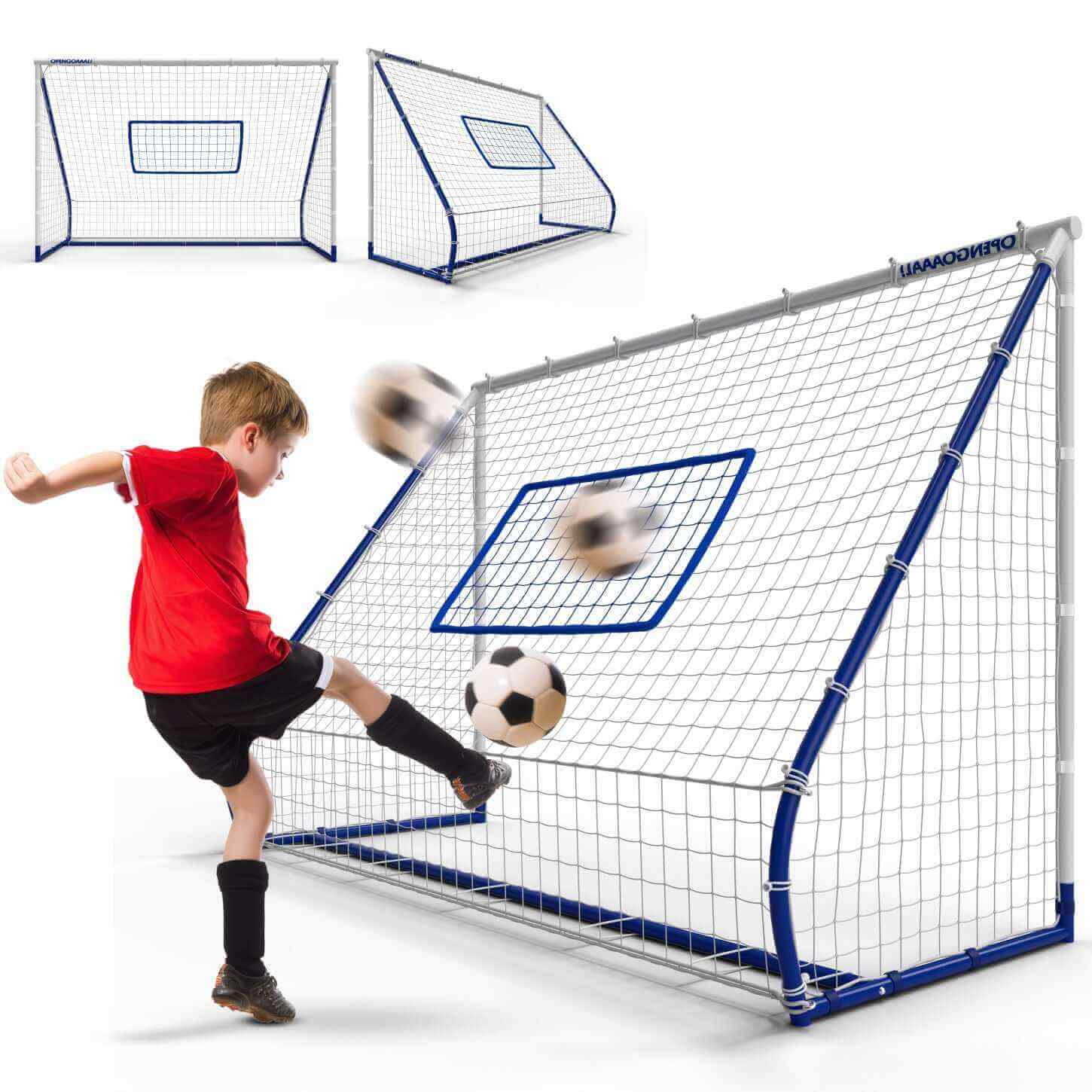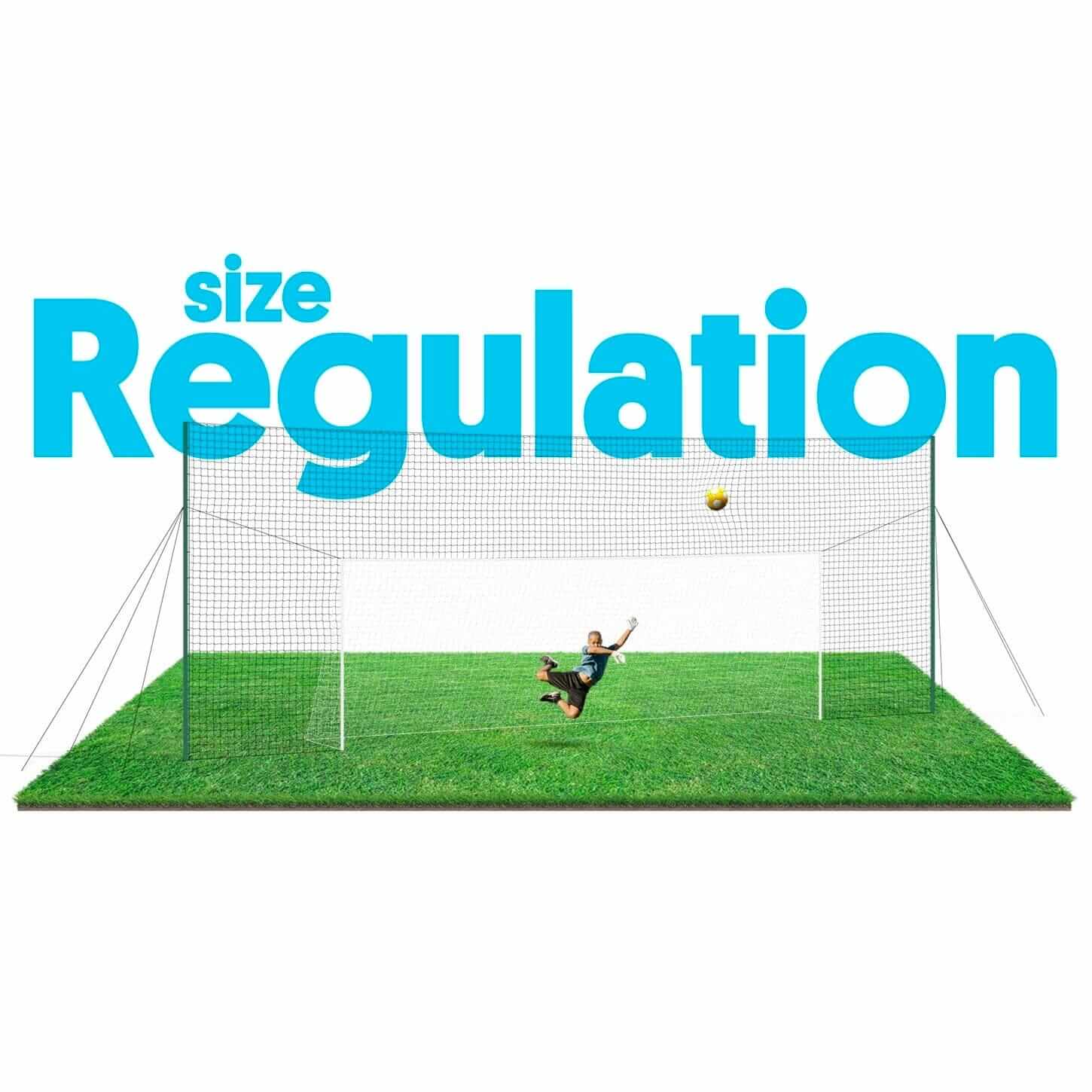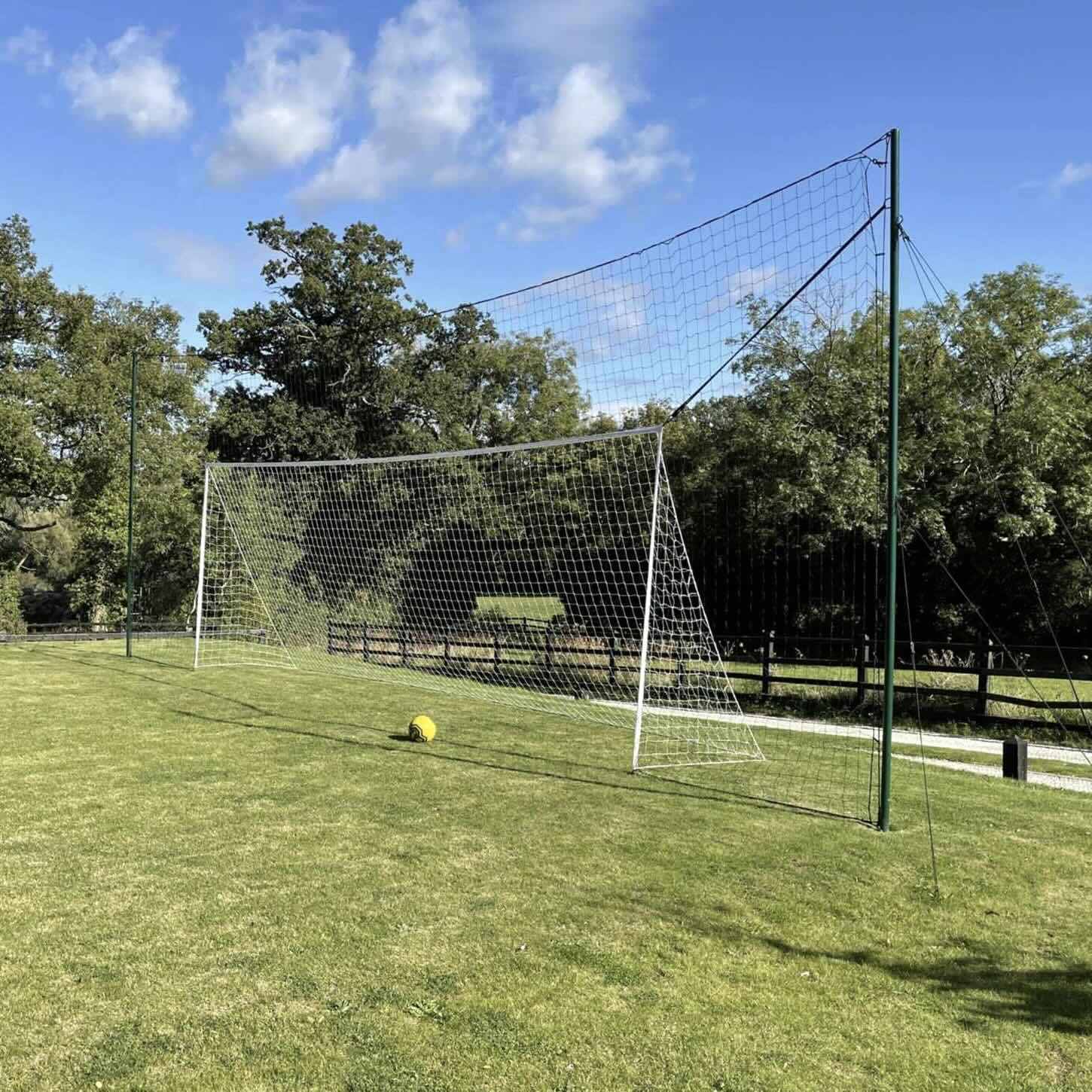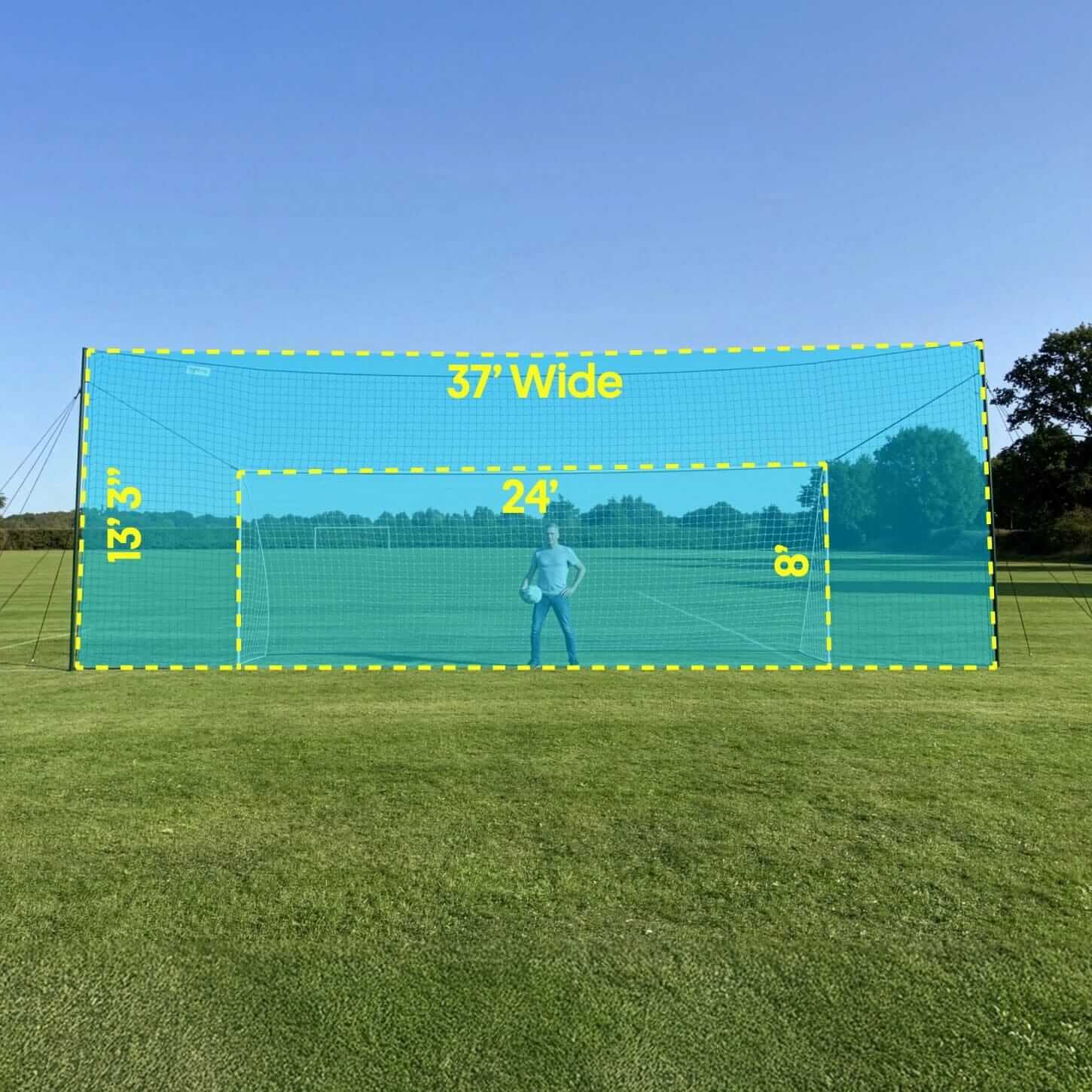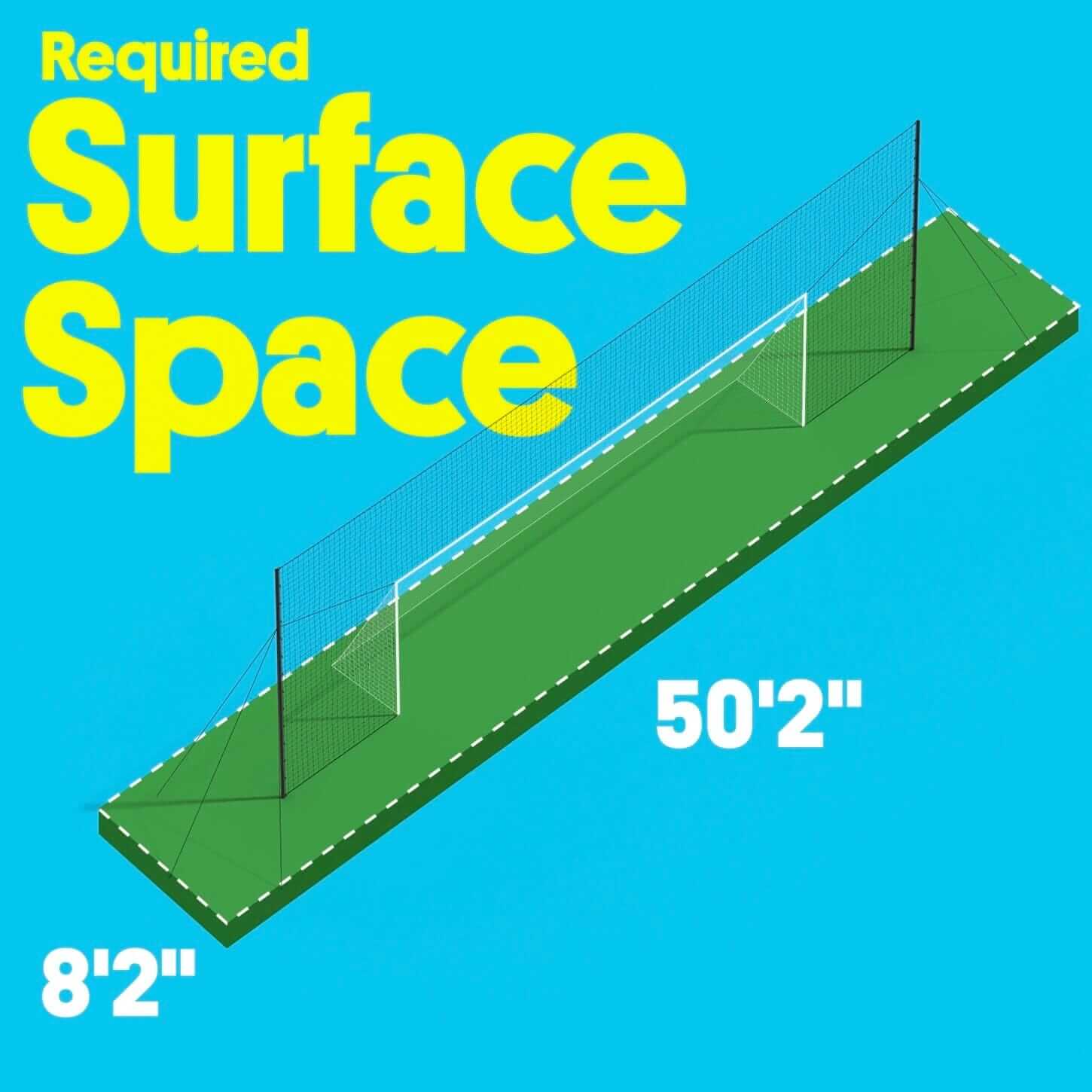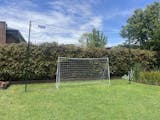At one point or another, every young soccer player has the dream of scoring the game winning goal. Striking the ball and watching it nestle into the top corner, out of reach of even the best goalkeeper. However, before you can be the hero, it is important to first understand the basics of shooting a soccer ball correctly.
From addressing the ball and determining the correct starting distance, to planting and following through, this guide will provide a walkthrough on how to properly and effectively shoot a soccer ball.
Setup

Lets go over setting up correctly to hit a driven shot towards goal. Before even thinking about striking the ball, you first want to learn how to properly address the ball and determine the perfect distance to start your run up in order to hit it with the desired power and accuracy. If the ball is too close to your feet and body when you try to shoot, it is incredibly difficult to generate any power behind the ball. You want to allow yourself a few steps to run up towards the ball. On the other hand, if you put the ball too far out in front of you, you are allowing defenders more time to get in a position to block your shot or take the ball away from you before you even have a chance to strike it.
Even when practicing alone in your backyard or at the local town field, you want to practice keeping the ball around five to seven feet in front of you when lining up your shot. This will allow you to generate power and control the direction of your shot while still getting the shot off in plenty of time.
Technique
While getting ready to begin your run up, take a quick peak towards the goal to help align yourself. Take notice of the goalkeeper’s position and choose where you are going to aim the ball. Next, starting with your kicking foot, take three small stutter steps in the direction of the ball. When going to strike the ball, keep your weight leaning slightly forward with your head down, looking at the ball. Your last step should be a larger one, planting your plant foot slightly behind and by the side of the ball. The direction your plant foot is pointing will determine the direction the ball is going to travel in. If your plant foot is facing towards the right side of the goal the ball will more than likely head to the right and if it is pointing towards the left side of the goal, the ball will travel to the left.
When going to strike the ball, it is important that you are doing so with the correct part of the foot and following through after contact. The first rule of thumb when taking any type of shot is to avoid striking the ball with your toes. Aside from the fact that it is a very easy way to injure yourself, it is also incredibly difficult to control the direction the ball will travel when struck with the toes first, regardless of the direction in which your plant foot is facing. While there are a few different techniques to shooting a soccer ball that we will touch on later in this guide, when practicing the basics of hitting a driven shot, you typically want to strike the ball with the top of your foot. This provides the shooter with the best technique to generate shot power while also keeping control over the height and direction of the shot.
It is important to have the right setup to practice shooting. At a soccer field, it is not as big of a deal if you miss shots, but at home, when you miss a shot, it can go over the fence, into the neighbor's yard, damage property, or break windows. That's why we developed the Open Goaaal Soccer Goal + Backstop + Rebounder ALL IN ONE! It prevents missed shots from going out of your yard.
Let’s quickly go over step by step how to properly shoot a driven shot:
- Have the ball about five feet in front of you, slightly to the side of the foot in which you are going to strike the ball.
- Take a quick peek at the goal and goalkeeper to determine where you are going to aim your shot.
- Starting with your kicking foot, take three stutter steps in the direction of the ball.
- Plant your non-kicking foot about a foot behind and to the side of the ball, keep your head down and your weight leaning slightly forward. Make sure your plant foot is facing the direction you would like to shoot the ball.
- Bring your kicking leg back with your knee bent at about a 45 degree angle.
- Strike through the ball with the top of your foot, keeping your ankle locked. Drive your through the ball in the same direction of your plant foot.
Now that we’ve gone over the steps to properly strike a soccer ball with power and control, we’ll now go over the different types of shots, when you use them and what changes to make in your setup and technique to master each one.
Finesse Shot

A popular and very useful type of shot is the finesse shot, also known as a curved shot. When struck correctly, the ball will appear to be headed wide of the intended target, however, by generating the correct amount of sidespin, the ball will begin turning and curving back in towards the target, making it difficult for the goalkeeper to judge where the ball is going to end up.
Your setup for the finesse shot is going to differ a little bit from the ball striking technique. When lining up for a finesse shot, you want to begin at about a 50 degree angle and around 4-5 feet behind and outside of the ball. That way you are coming in at a wider angle in order to generate the spin to make the ball curve. When running towards the ball, you will want to plant your plant foot slightly behind the ball. While keeping your weight leaning slightly forward, strike the outside of the ball with the inside middle part of your foot. During the follow through, bend your leg around slightly, almost as if you want your leg to follow the same path that you want the ball to curve in. Now watch as the ball spins masterfully back towards your target as the goalkeeper panics to get in the correct position to stop it.
Finesse shots can be incredibly helpful when cutting in and attacking from the wing where you have a tighter angle to deliver the ball on goal. If you were to come in at this angle and try to strike the ball straight, odds are it will be drilled directly at the goalkeeper and collected easily. By generating a bit of spin on the ball, you can strike the ball outside of your target line and allow it to curve around the goalkeeper towards the far corner of the goal. Typically, to generate the most spin, you will want to aim and shoot the finesse shot higher to allow it more time to cut through the air.
Chip Shot

Another useful type of shot to use in situations where you notice the goalkeeper is far off their goal line while you are attacking with the ball is the chip shot. This is a softer, high lofted shot used to lift the ball over the goalkeeper and drop quickly back down and land in the net. Chip shots are useful when the goalkeeper has cut down your angle, but has left plenty of space behind them to let the ball drop into. Therefore, you want to deliver a high shot that the goalkeeper is unable to get any part of their body on to block it.
To properly chip the ball, take a short run up and clip the underside of the ball with the front, inside part of your foot. Contrary to the other types of shots, you want your weight leaning slightly back as this allows you to create more loft to deliver a higher shot, out of reach of the opposition. Also unlike the other types of shots, your follow through upon clipping the ball should be low. Keep your foot down towards the ball after impact as opposed to bringing your leg up and out. Clipping the underside of the ball and keeping your follow through low allows the ball to generate a lot of backspin. This is important because the backspin allows the ball to get high over the keeper and then quickly back down so that the ball does not get launched over the crossbar.
Another key to the chip shot is the element of surprise. Given that it is a softer shot that requires precision, it is important to disguise the fact that you are going to chip the ball during your run up. Your run up will not be as deliberate as the finesse shot, as it is more of a quick lifting of the ball as opposed to a full strike. That being said, you do want to be sure that you are not scooping the ball with your toe as this takes away a lot of your control and does not allow the ball to generate as much backspin as the low follow through will.
Get out there and practice!
A good way to practice shooting is to grab an object such as a cone or a trash can and place it as a target in the goal. Practice striking the ball towards this one target focusing on your run up, plant foot position and where on your foot you are striking the ball. This helps to create muscle memory and to practice striking the ball in the areas of the goal where you are most likely to score.
The first step of being a great striker and goal scorer is to master the technique of shooting a soccer ball in multiple different ways. Developing these skills allows you to be a much more unpredictable player with an arsenal of both power and finesse. Get on out there and give it a try!





